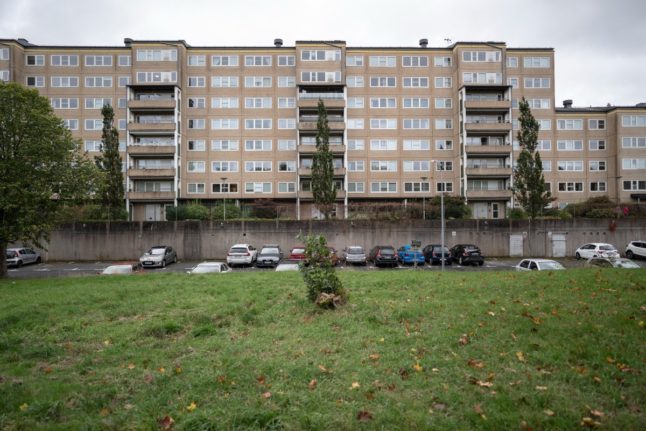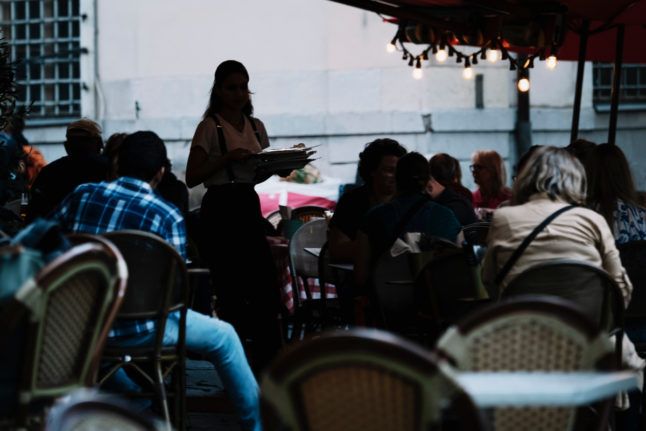With “strategic demolitions” in the most segregated and crime-ridden housing areas, a ban on people on benefits moving into them, and a limit on the share of rental housing in such areas, the plan sketched out in an opinion piece in the Svenska Dagbladet newspaper on Sunday is the boldest new policy proposal the Social Democrats have made in years.
It’s basically a sanitised version of the “ghetto plan” launched in Denmark back in 2018.
And judging by the reaction – with right-wing commentators decrying what they call tvångsblandning (forced mixing) and bussning (using buses to swap pupils between areas) and left-wing ones decrying the demolition plans and proposals to let educated people jump rental queues, it promises to be almost as controversial.
But what’s the alternative, Lawen Redar, the Social Democrat MP who led the working group on segregation, asked Swedish public broadcaster SVT on Sunday.
“Should we just leave the situation like it is today?” she said of Sweden’s 59 problem housing areas, in some of which 80 percent or more have an immigrant background. “I am extremely frustrated over this. Something must be done.”
What are the Social Democrats proposing?
Redar and her three colleagues made 11 proposals in their article:
1. A national list of “vulnerable areas” with a set of targets to promote: the physical reconstruction of the areas to combat segregation and promote integration; a better mix in the population; an increase in the use of Swedish language in welfare services; bold moves to increase the amount of people in work; and an increased police presence to fight criminality.
2. Central government to hold so-called “Sweden negotiations” with municipalities to jointly fund physical improvement of the areas, by new building, densification, strategic demolitions, and new traffic and public transport solutions.
3. A limit to the proportion of rental apartments in vulnerable areas. Areas with high levels of rental apartments would be required to take action to increase the share of private and cooperative housing.
4. Government to give credit guarantees to companies building detached, semi-detached, and terraced houses in vulnerable areas.
5. Government funds for renovation and upgrading of “Million Programme” areas.
6. Minimum income for those moving to vulnerable areas. Landlords would be banned from renting out property in vulnerable areas to anyone who has lived off benefits in the last six months.
7. People with university degrees would be given priority in the queue for rental apartments in vulnerable areas.
8. New regulations to prevent landlords setting high income requirements for rental properties outside vulnerable areas.
9. Government to give credit guarantees and other forms of investment support to companies building affordable rental apartments outside vulnerable areas.
10. An inquiry into how to increase the share of rental properties owned by non-profit and public housing companies outside vulnerable areas
11. An inquiry into how to give municipalities first right to bidding on socially important and strategic land.
What’s the problem?
Although Sweden’s recent epidemic of gang shootings has been blamed by many on the country’s extreme housing segregation, Redar and her colleagues said that this was far from the only problem.
Fully 40 percent of adults between the ages of 20-64 in Sweden’s 59 “vulnerable areas” cannot support themselves through their work, three out of 10 children in such areas leave secondary school without the grades needed to go to upper secondary school or gymnasium.
Part of Sweden’s segregation problem, as Lawar recognised, is built into the architecture. The Social Democrats’ “Million Homes programme”, enacted between the mid 1960s and the mid-1970s, may have rescued people from slum conditions, but it also created a series of isolated urban communities on the outskirts of Sweden’s cities, often cut off from the rest of towns and cities by motorway ring-roads.
Although they were initially built for working-class ethnic Swedes, as the rate of immigration to Sweden picked up in the 1980s,1990s and early 2000s, Swedes became outnumbered as part of so-called “white flight”.
Fully 80 percent of those living in the so called “especially vulnerable areas” now have a foreign background, a share that rises to above 90 percent in five of the most segregated districts.
“We believe that there is no more important task for Sweden than breaking segregation and fighting the class society. No task is more urgent,” Redar and her colleagues wrote in their article.
“The fact that children and young people are growing up in this cemented inequality is nothing less than a social failure which brings shame to our country. It must come to an end.”
What are opponents saying about it?
Fredrik Kopsch from the right-wing Timbro thinktank complained that efforts to increase the number of people with immigrant backgrounds in middle class and rich areas of Swedish cities would not work.
“The income requirement [for rental apartments] will be reduced through the law, and state subsidies will create cheap rental apartmments in socio-economically strong areas. It is detached from reality to think that this will help deprived people,” he wrote in an article in Svenska Dagbladet.
Will it help the Social Democrats?
The Social Democrats were criticised for lacking concrete policy proposals, both in the run-up to the 2022 general election and in their first year and a half in opposition.
With this proposal, together with a proposal to make kindergarten compulsory for children over three years old, that has changed.
If the rest of the 11 policy working groups set to present their conclusions at the party’s congress in August come up with similarly detailed proposals, the party will be overflowing with new ideas.
While this will finally give its politicians something to say for themselves, it will also make them easier to attack.



 Please whitelist us to continue reading.
Please whitelist us to continue reading.
It is nice to see a bold plan to tackle segregation coming out of the social democrats, even if some of the points are a little controversial. Perhaps it will stimulate other parties to also formulate their own proposals. The Timbro replica was nonsense, it suggested creating a Swedish model for the housing market while at the same suggesting the Swedish model in the labor market should be undermined by legislation.